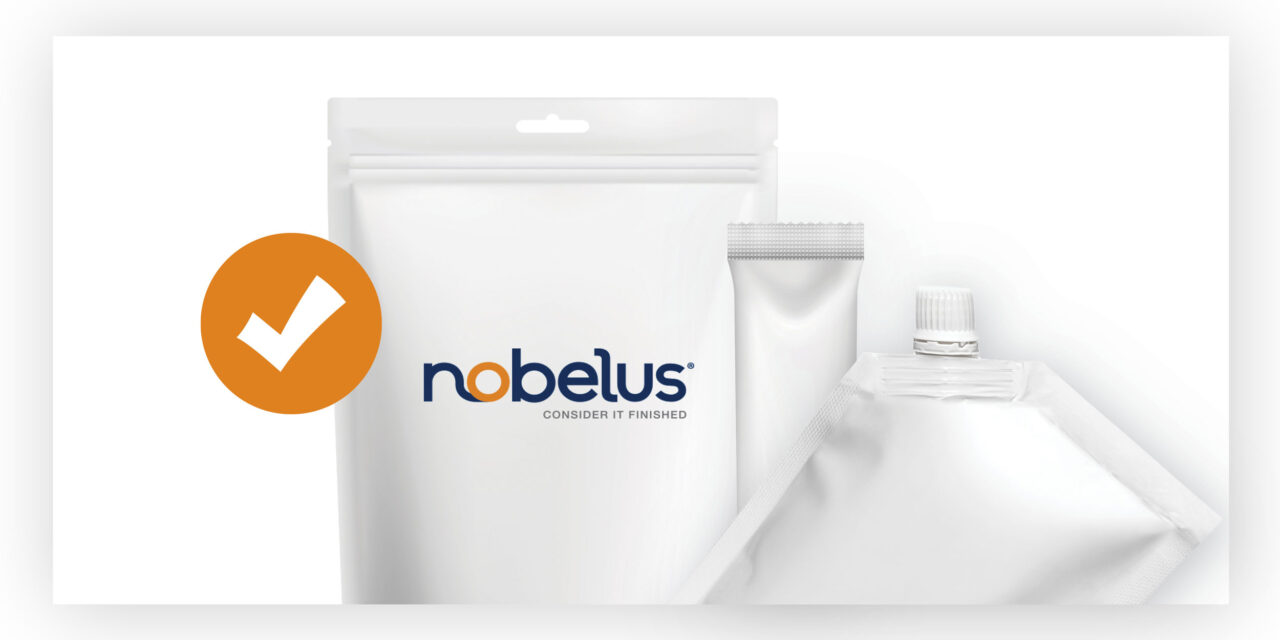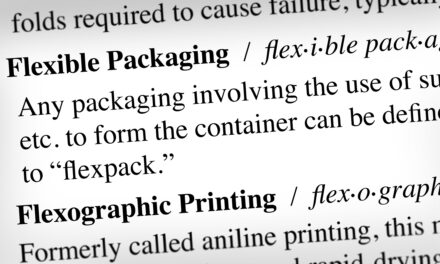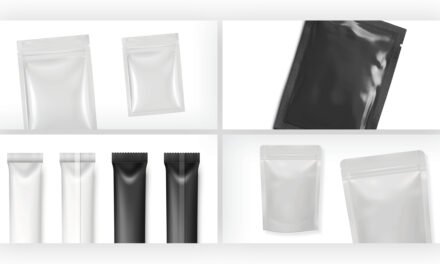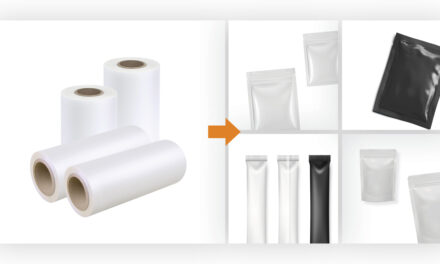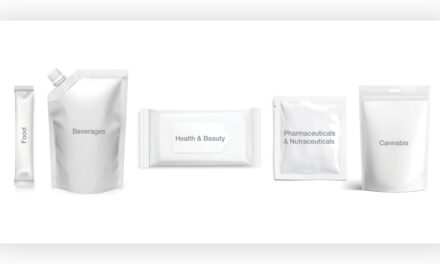THE IMPORTANCE OF FLEXIBLE PACKAGING AND PRODUCT SAFETY
People all over the world use flexible packaging every day, likely without giving it a second thought. We may pick up a pre-packaged breakfast burrito on our way out the door in the morning and then unzip a resealable bag of granola for an afternoon snack. Perhaps we will hand our children a squeezable yogurt when they get home from school and then patch up a scrape later with a disinfectant wipe and bandage from a first aid kit. We feed our pets kibble from bags, tear open packets of powdered drink mix, and wash our faces with makeup remover wipes, trusting all the while that these products will be safe for consumption and fulfill their purpose without a hitch.
While the products in these examples often get the spotlight, the truth is the packaging that they come in is equally as important to maintaining their quality and, by extension, the safety and health of the end consumer. Poor-quality flexible packaging can lead to moldy breakfast burritos, congealed yogurt, dried-out wipes, and stale kibble that even a hungry pet may avoid. Flexible packaging converters play a key role in marketing products by printing clean designs and providing brands with creative material options. However, the primary purpose of flexible packaging is to protect the packaged items. Even the most beautiful package will have failed in its ultimate purpose if it allows the product to be damaged or otherwise negatively affected.
For this reason, it is critical that flexible packaging converters understand the characteristics of the products that will be put in their packaging and adjust their structures or pre-lams appropriately based on practical requirements and legal regulations. While it is not feasible to cover every potential permutation of package type to product, we can take a look at a few major factors flexible packaging converters should take into consideration when deciding how to approach a new print job or new product type.
GENERAL CONSIDERATIONS
The integrity of a package can be affected by a myriad of things. From outside elements, such as oxygen, moisture, and light, to the contents of the package, such as products with sharp edges that could pierce through the package’s film layers, a responsible flexible packaging converter will understand the product well enough to plan for potential mishaps. Flexible packaging is incredibly complicated and requires meticulous engineering in how it is shaped and formed. If even one piece of the packaging fails, the product could be at risk of spoilage or damage.
Packaging Format/Shape
While the form a flexible package takes cannot ensure the product will be protected on its own, it does serve a crucial role in consumer experience and proper storage. For example, small, loose products, such as nuts or granola, are not suited for horizontal flow wraps. Beyond the difficulties that could arise in the co-packing stage, consumers would be frustrated if they tried to open the package and found their snack scattered across the floor. These types of items are easiest to consume when packaged in a bag or packet with an obvious top and bottom. Conversely, putting a granola bar in a loose bag instead of a horizontal flow wrap will likely result in the bar breaking into smaller pieces as it is dropped and jostled during transport and handling.
In both of these examples, the integrity of these products was threatened even though they were technically safe for consumption when they reached the end consumer. Fortunately, converters often have a bit of room for experimentation when it comes to what format their packaging will come in, and brands are becoming more interested in creative packaging formats as a way to help their products stand out on the shelf. Learning to balance quality, cost, and creativity regarding packaging formats is vital for a converter’s ultimate success.
Barrier Layers
Barrier layers are built into the structure of the laminate web that is ultimately shaped into the finished package. As their name implies, barrier layers prevent specific elements and environmental factors from permeating the package; these factors could come from outside or inside the package. Below are a few common types of barrier layers and where they are typically used.
Moisture barriers prevent humidity, liquids, and vapor from entering or leaving the package. They are necessary for many dry goods, such as powders that would clump together if exposed to even slight amounts of water. Biaxially oriented polypropylene (BOPP), metalized polyester (METPET), and aluminum foil (AL) can all be used to reduce or eliminate the package’s water vapor transmission rate (WVTR).
Gas barriers lower a package’s oxygen transmission rate (OTR) to keep oxygen and various other gases from interacting with the packaged product. Dehydrated goods and chips can get soggy or spoil when exposed to oxygen; in fact, many times bags with these and similar products are filled with nitrogen, CO2, or another inert gas to keep the food fresh. METPET, AL, and ethylene vinyl alcohol (EVOH) are all commonly used films.
Light barriers are necessary to prevent foods with a high fat content from going rancid when exposed to UV light. AL, METPET, paper, and even ink can be used to block UV light from entering a package.
Mechanical barriers keep products with sharp edges, such as frozen goods and nuts still in the shell, from puncturing the package and creating an opening for other contaminants to enter the package. PET and nylon are often used for this purpose due to their high durability.
Chemical barriers are typically intended to keep caustic product from leaking out rather than keep an outside contaminant from getting in. Cosmetics and cleaning solutions sometimes contain chemicals that can react negatively with the packaging unless an appropriate film, such as polyethylene (PE), is used to protect other layers in the structure.
Seals
The seals on a package serve as a sort of doorway between the outside world and the packaged product. Beyond their basic function of binding the edges of a laminate web together to shape the package, seals also enable the package to be opened by the consumer. In a kind of paradox, the seals on a flexible package must be simultaneously difficult to open during transit and handling and easy to open once the package reaches the consumer. Most people have likely had a negative experience with trying and failing to pull open a snack bag when hungry, but it would be equally unfortunate to find that a package has burst open in a purse or backpack.
Several factors can affect which type of seal is best for a specific application, from product type to how much air the package contains to how quickly the end consumer is expected to use it. We’ll look at a few common sealing methods and when they are typically used.
Cold seals are created by applying a viscous glue to the laminate web of an unformed package and then using pressure to activate the glue for a strong bond. Cold seals are common in applications where the packaged product cannot be exposed to high temperatures, such as chocolate and certain frozen goods. Consumers can recognize a cold seal by the sticky glue that is revealed upon pulling apart the seal. The integrity of cold seals may be susceptible to heat exposure when left in a warm car or outside in warm weather.
Heat seals are stronger than cold seals and can be used in many different types of packaging, from pillow bags and stick packs to stand-up pouches. When products are ready to be inserted into the package, a heat seal is applied via a heated sealing bar that presses down on the package as it passes through the machine, fusing the films together.
A hermetic seal is completely airtight, eliminating the risk of contaminants entering the package. While they play a role in many markets, hermetic seals are especially important in medical contexts where packaged goods must be completely sterile when opened. While many applications don’t necessitate use of a hermetic seal, those that do leave no room for error, so converters who deal in these markets must take every effort to ensure their seals are airtight.
Testing, Transportation, and Handling
Before a package reaches the end consumer, it has to survive the trip from the warehouse to the store shelf. The chief concern in this context is the durability of the package in the face of repeated handling, temperature changes and potential changes in pressure depending on the geographical distance it will have to travel.
Converters should always verify that the packaging they have produced is capable of withstanding any conditions it may reasonably encounter through quality testing and data gathering. Drop tests, tear tests, bursting tests, and a variety of other standardized testing methods should be performed at each stage of production and before the finished product is shipped out to ensure the package (and the stored product) will make it to the consumer in one piece.
LEGAL CONSIDERATIONS
Unlike the practical concerns listed above, legal regulations for flexible packaging leave no room for interpretation or experimentation on the part of converters. Regardless of size, the products they produce, or the markets they serve, every flexible packaging converter should be intimately familiar with legal requirements surrounding everything that leaves their facility.
Food Safety
In the United States, the Food and Drug Administration (FDA) is responsible for categorizing different types of food products and creating regulations that protect consumers from injury, disease, and misinformation. Flexible packaging converters who deal with food substances (which constitutes the vast majority of flexible packaging applications) should have a thorough understanding of Packaging and Food Contact Substances regulations, specifically information concerning Food Types and Conditions of Use. Converters who create their own structures in-house especially need to validate that the films they are using abide by all established guidelines.
Regional Laws
Finally, flexible packaging converters should be aware of how food packaging legislation can vary from region to region. Within the United States alone, each individual state has the ability to create specific laws that can have a big impact on what is and is not considered acceptable in prepackaged food.
A well-known example of these laws is Proposition 65 in California; although this legislation does not ban any materials outright, it outlines which substances require a warning on the packaging due to their correlation with various diseases and conditions. As each state is equally capable of creating their own set of regulations concerning food packaging, flexible packaging converters should stay up to date on legislation in the areas they currently service and perform careful research when branching out.
HAVE MORE QUESTIONS ABOUT FLEXPACK?
If you have questions about a specific scenario or situation in your own operation, don’t hesitate to reach out to our team through email or phone. Our solutions experts and product managers have years of experience in the flexible packaging industry and can help you find the laminates, films, and equipment you need to make high-quality packaging for a variety of formats and markets. We can offer more detailed guidance regarding specific applications and help you locate resources for education and further growth in the industry.

